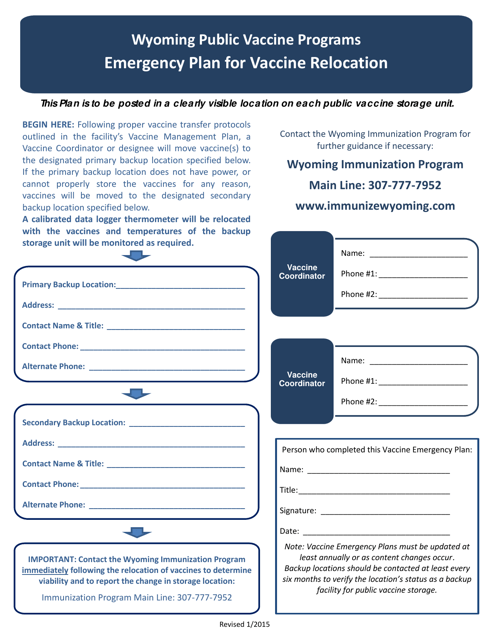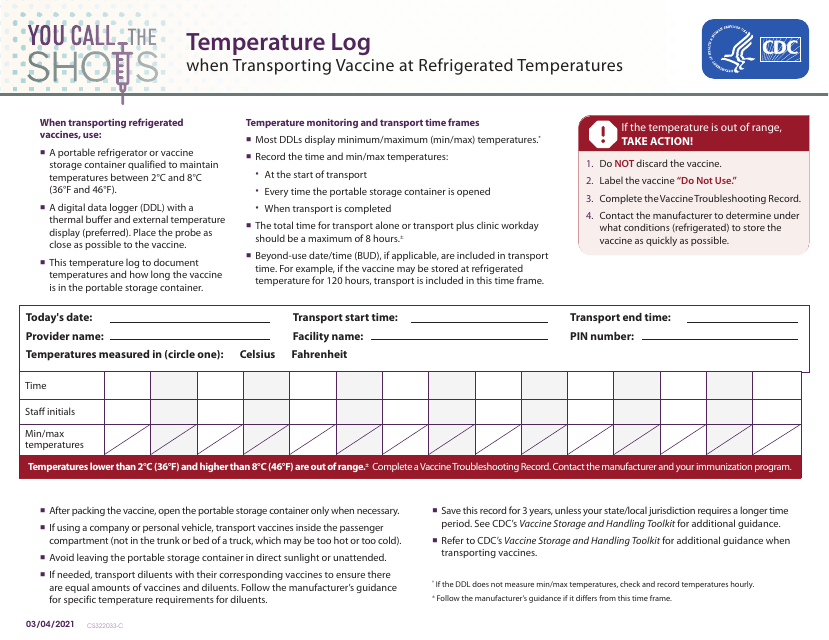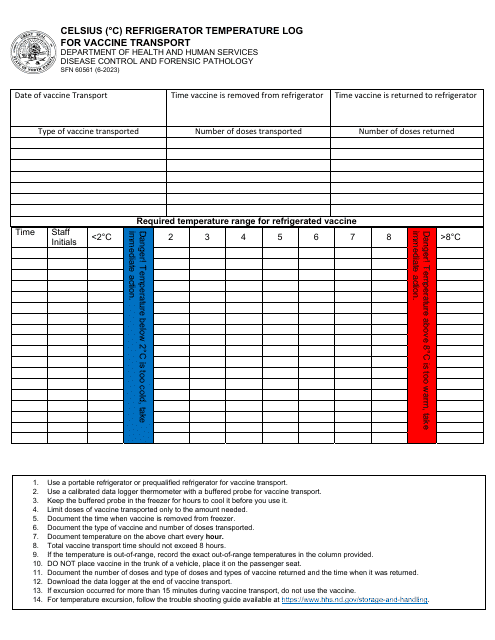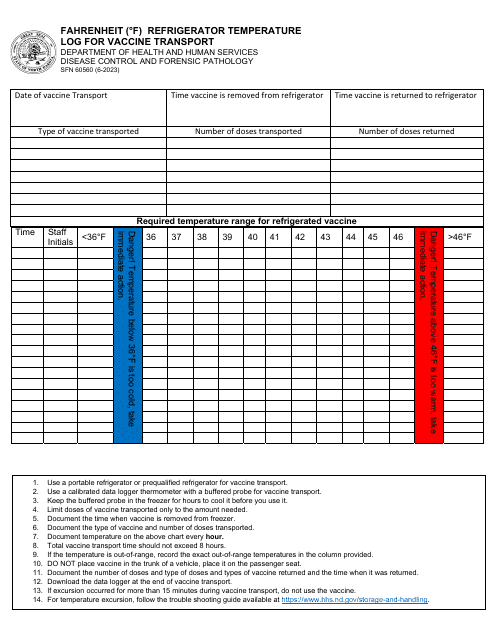Vaccine Transportation Templates
Vaccine transportation is a critical aspect in ensuring the efficacy and safety of vaccines. The proper handling and transport of vaccines play a pivotal role in maintaining their potency and effectiveness. It involves the movement of vaccines from one location to another while maintaining the required temperature conditions.
At times, vaccines need to be relocated or transferred to different facilities due to various reasons such as emergencies or distribution needs. In such cases, an emergency plan for vaccine relocation becomes crucial. This plan outlines the necessary protocols and procedures to be followed when transporting vaccines to ensure their integrity and minimize any potential risks.
To monitor the temperature during vaccine transportation, temperature logs are used. These logs, such as the Refrigerated Vaccine Transport Log, Form CS322033-C, or the Celsius (C) and Fahrenheit (F) Refrigerator Temperature Logs, help record temperature fluctuations during transport. These logs are essential as they provide a comprehensive record and accountability of the temperature conditions during vaccine transportation.
Proper vaccine transport is vital to prevent any compromise in the quality and effectiveness of vaccines. It requires adherence to specific guidelines and protocols to maintain the required temperature range. This process is often referred to as vaccine transport or transporting vaccine. By following the appropriate procedures, vaccines can reach their intended destinations while ensuring their potency remains intact.
In summary, vaccine transportation, also known as vaccine transport or transporting vaccine, is a critical process that requires careful handling and adherence to temperature guidelines. Through the use of temperature logs and emergency relocation plans, the integrity and effectiveness of vaccines can be maintained during transportation.
Documents:
5
This document is used for tracking the transportation of refrigerated vaccines in New Mexico.
This document outlines the emergency plan for relocating vaccines in the state of Wyoming. It provides guidelines and procedures in case of unforeseen events that may require vaccine relocation.
This form is used for meticulously tracking and recording temperatures when vaccines are being transported under refrigerated conditions. It ensures the maintenance of optimal temperature during transit, safeguarding vaccine effectiveness.





